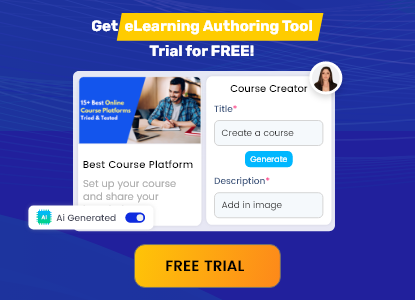Introduction
In today’s fast-paced digital learning landscape, eLearning content creation needs to be efficient, scalable, and collaborative. This is where cloud-based authoring tools play a crucial role. They offer an online platform for creating, editing, and managing eLearning content without the need for complex software installations.
A cloud-based authoring tool enables instructional designers, educators, and businesses to develop interactive learning materials with ease. But how does it work, and why is it gaining traction in the eLearning industry? This blog explores the essentials of cloud-based authoring tools, their advantages, and how they differ from traditional authoring software.
What is a Cloud-Based Authoring Tool?
A cloud-based authoring tool is an online software application that allows users to create eLearning content directly from a web browser. Unlike traditional authoring tools that require installation on a specific device, cloud-based tools are hosted on remote servers, enabling users to access them anytime, anywhere.
These tools facilitate the creation of interactive eLearning modules, quizzes, simulations, and multimedia courses, all while ensuring seamless collaboration among teams.
How Does a Cloud-Based Authoring Tool Work?
Cloud-based authoring tools operate on a Software as a Service (SaaS) model, meaning users can log in through a web browser and start creating content instantly. Here’s how they work:
- Sign Up & Access – Users create an account and log in from any internet-enabled device.
- Course Creation – Utilize pre-designed templates, drag-and-drop editors, and multimedia integration to design courses.
- Collaboration – Teams can work together in real-time, review content, and provide feedback instantly.
- Publishing & Distribution – Export courses in SCORM, xAPI, or other formats to integrate with Learning Management Systems (LMS).
- Analytics & Updates – Track learner progress and update content seamlessly without reinstalling software
Why Choose a Cloud-Based Authoring Tool Over Traditional Software?
1. Flexibility & Accessibility
- Access the tool from any device with an internet connection.
- No need for high-end hardware or installations.
2. Collaboration in Real-Time
- Multiple users can edit content simultaneously.
- Streamlines feedback and approval processes.
3. Automatic Updates & Scalability
- No manual software updates; new features are rolled out automatically.
- Scales easily as organizational needs grow.
4. Cost-Effectiveness
- Eliminates upfront software installation costs.
- Subscription-based pricing models offer affordability.
5. Integration & Compatibility
- Works seamlessly with LMS platforms.
- Supports multiple export formats like SCORM, xAPI, and HTML5.
How Secure is a Cloud-Based Authoring Tool?
- SSL Encryption – Ensures secure data transmission.
- Role-Based Access Control (RBAC) – Limits access based on user roles.
- Regular Backups – Protects against data loss.
- GDPR & Compliance Standards – Ensures adherence to global data protection regulations.
Always check the security protocols of the platform you choose to ensure data integrity and compliance.
Explore: The 24 Best eLearning Authoring Tools, Platforms & Software (2025)
Conclusion
Cloud-based authoring tools revolutionize eLearning content development by offering efficiency, scalability, and seamless collaboration. Whether you are an educator, corporate trainer, or instructional designer, these tools provide an intuitive platform for creating engaging learning experiences.
Ready to enhance your eLearning strategy? Explore top cloud-based authoring tools today and elevate your content creation process!























